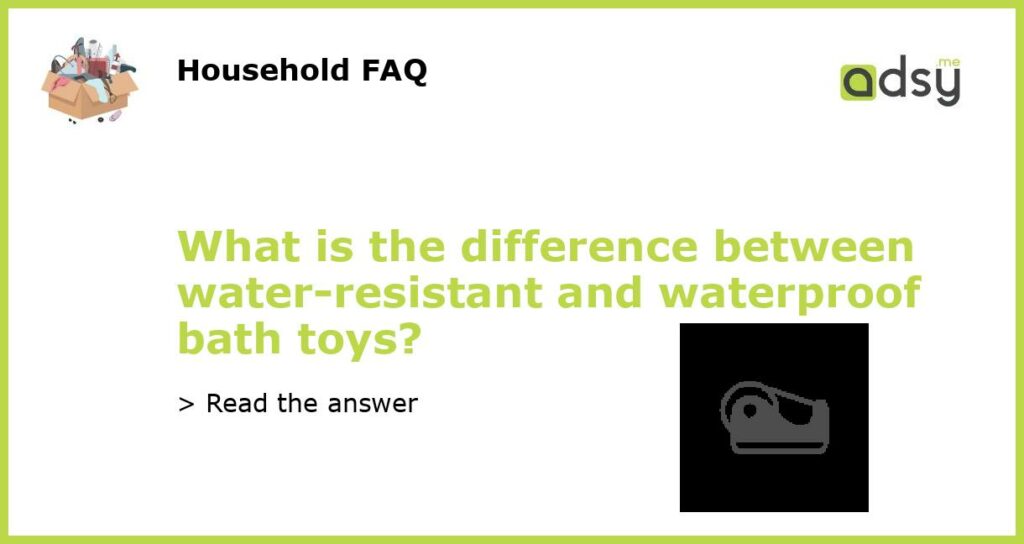Water-resistant vs Waterproof: What’s the difference?
When it comes to bath toys, the terms “water-resistant” and “waterproof” are often used interchangeably. However, there is actually a significant difference between the two.
Water-Resistant
Bath toys that are labeled as “water-resistant” are able to repel water to a certain extent, but they are not completely impervious to it. This means that they may still end up getting wet, and they may not be able to withstand prolonged exposure to water.
Water-resistant bath toys are typically made with materials that can resist some water, such as plastic or rubber. However, they may not be completely sealed, and water can still seep into the toy if it is submerged for too long or if the toy has any crevices or cracks.
Waterproof
On the other hand, bath toys that are labeled as “waterproof” are able to completely resist water. This means that they can be fully submerged in water for extended periods of time without getting damaged or allowing any water to seep in.
Waterproof bath toys are usually made with materials that are completely sealed, such as silicone or plastic. They may also have additional features like watertight seals, to ensure that no water can get inside the toy.
Why Does It Matter?
Understanding the difference between water-resistant and waterproof bath toys is important because it can impact how you use them and how long they last.
If you have water-resistant bath toys, you may want to limit their exposure to water and make sure that they dry thoroughly after each use to prevent any damage or mold growth. Waterproof toys, on the other hand, can be used more freely and don’t require as much maintenance.
Making the Right Choice
When choosing bath toys for your child, it’s important to consider both their safety and the durability of the toys. While water-resistant toys may be more affordable, they may also be more prone to wear and tear if they are exposed to water frequently. Waterproof toys, on the other hand, may be more expensive but can last longer and provide a safer play environment.
Ultimately, the choice between water-resistant and waterproof bath toys depends on your personal preference and needs. By understanding the difference between the two, you can make a more informed decision and choose toys that will provide the best experience for your child.






